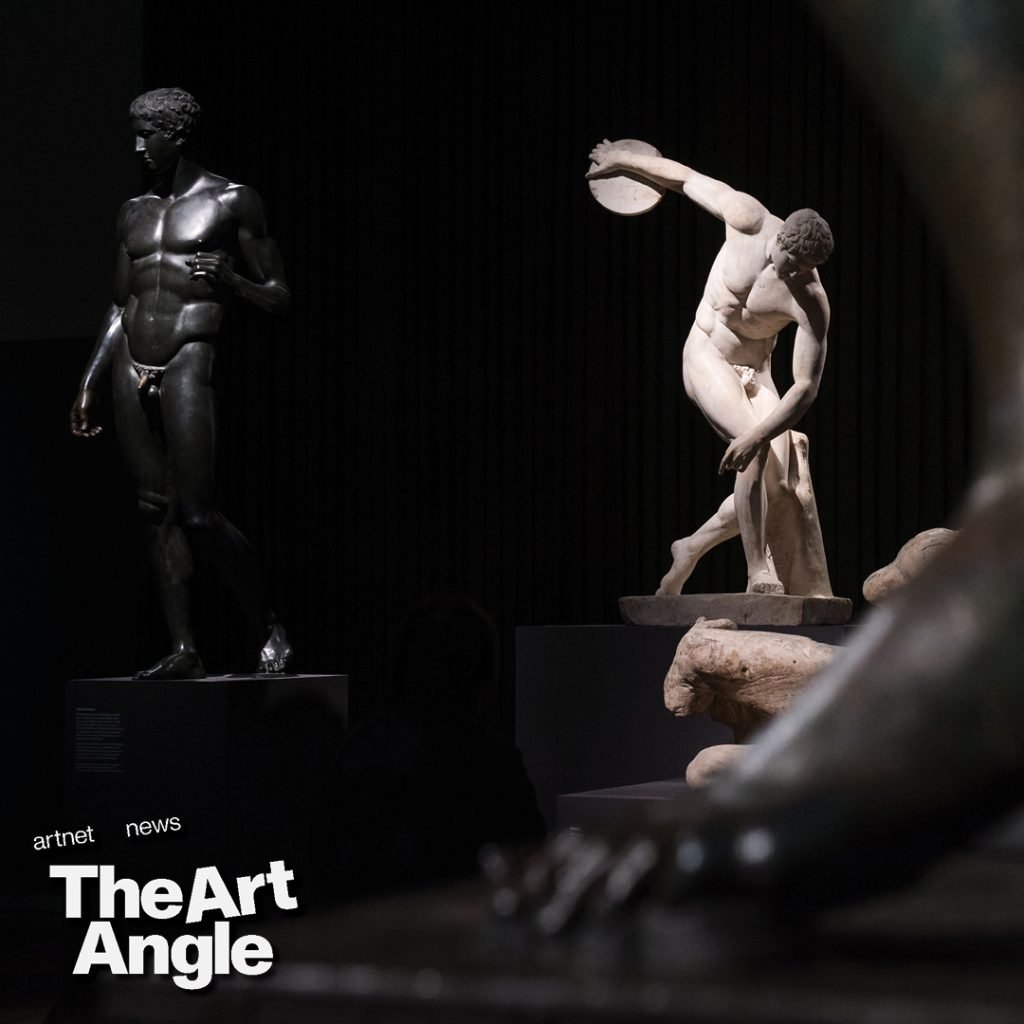The Art Angle
Decoding the Ancient Sculpture That Defines Olympic Athleticism
Editor Annikka Olsen joins the podcast to discuss the long and complex history of the famous 'Discobolus' sculpture.

Editor Annikka Olsen joins the podcast to discuss the long and complex history of the famous 'Discobolus' sculpture.

Artnet News

It is mid-summer and as always there a lot of exciting things going on in Paris, but this year is special as it sets the stage for the Summer Olympic Games. Now in full swing, there are scores of events and performances around iconic landmarks of the city, from equestrian racing on the grounds of Versailles to swimming in the Seine. While at first blush it may not seem like the place for an art publication, art and the Olympics have a long and storied history from the ancient to modern games, artists used to compete in various media as Olympic events, in fact.
And so this month we turned the lens of our popular Three Things column—an article that looks at three (or more) fascinating aspects of a well-known and well-loved work of art, often illuminating lesser-known backstories—to a hallmark of the Olympics. This week we’re focused on one of the most famous pieces of art that is about the Olympics, the Discobolus, which depicts an ancient Greek athlete at the exact moment of tension before hurling the discus, which is one of the oldest events in the Olympics.
Artnet’s Galleries Editor Annikka Olsen wrote a very compelling article fleshing out this symbolic artwork, and she joins co-host Kate Brown on the podcast this week. The duo talk about the amazing and complex history of the discus thrower in all of its many iterations from the before-Christ era right up to today.